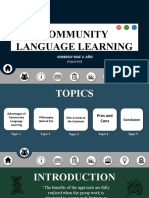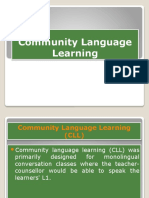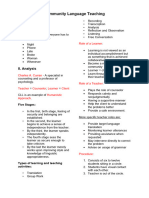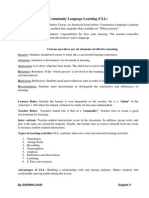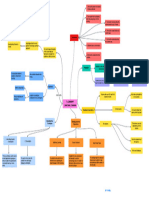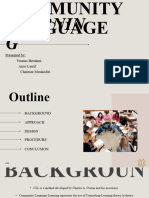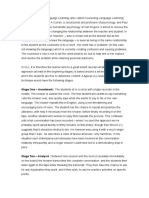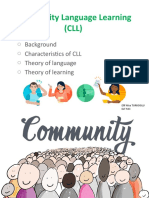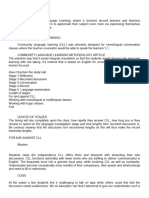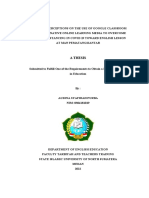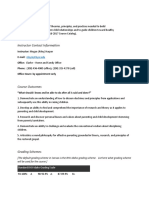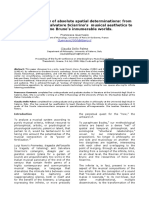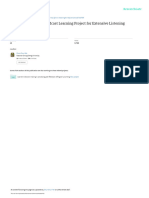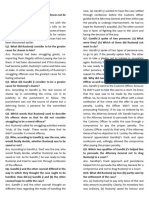0% found this document useful (0 votes)
101 views23 pagesCommunity Language Learning
Community Language Learning (CLL) is an educational method that views language learning as a social process. It emphasizes creating a non-defensive learning environment where students work together in groups with the teacher acting as a facilitator rather than instructor. CLL is based on the Counselling-Learning approach and involves students recording conversations which are then transcribed, analyzed, and practiced to develop language skills through reflection and experimentation. The method aims to consider the whole student, including their feelings, reactions, and desire to learn.
Uploaded by
Husam M. BinSasiCopyright
© © All Rights Reserved
We take content rights seriously. If you suspect this is your content, claim it here.
Available Formats
Download as PPTX, PDF, TXT or read online on Scribd
0% found this document useful (0 votes)
101 views23 pagesCommunity Language Learning
Community Language Learning (CLL) is an educational method that views language learning as a social process. It emphasizes creating a non-defensive learning environment where students work together in groups with the teacher acting as a facilitator rather than instructor. CLL is based on the Counselling-Learning approach and involves students recording conversations which are then transcribed, analyzed, and practiced to develop language skills through reflection and experimentation. The method aims to consider the whole student, including their feelings, reactions, and desire to learn.
Uploaded by
Husam M. BinSasiCopyright
© © All Rights Reserved
We take content rights seriously. If you suspect this is your content, claim it here.
Available Formats
Download as PPTX, PDF, TXT or read online on Scribd
/ 23









